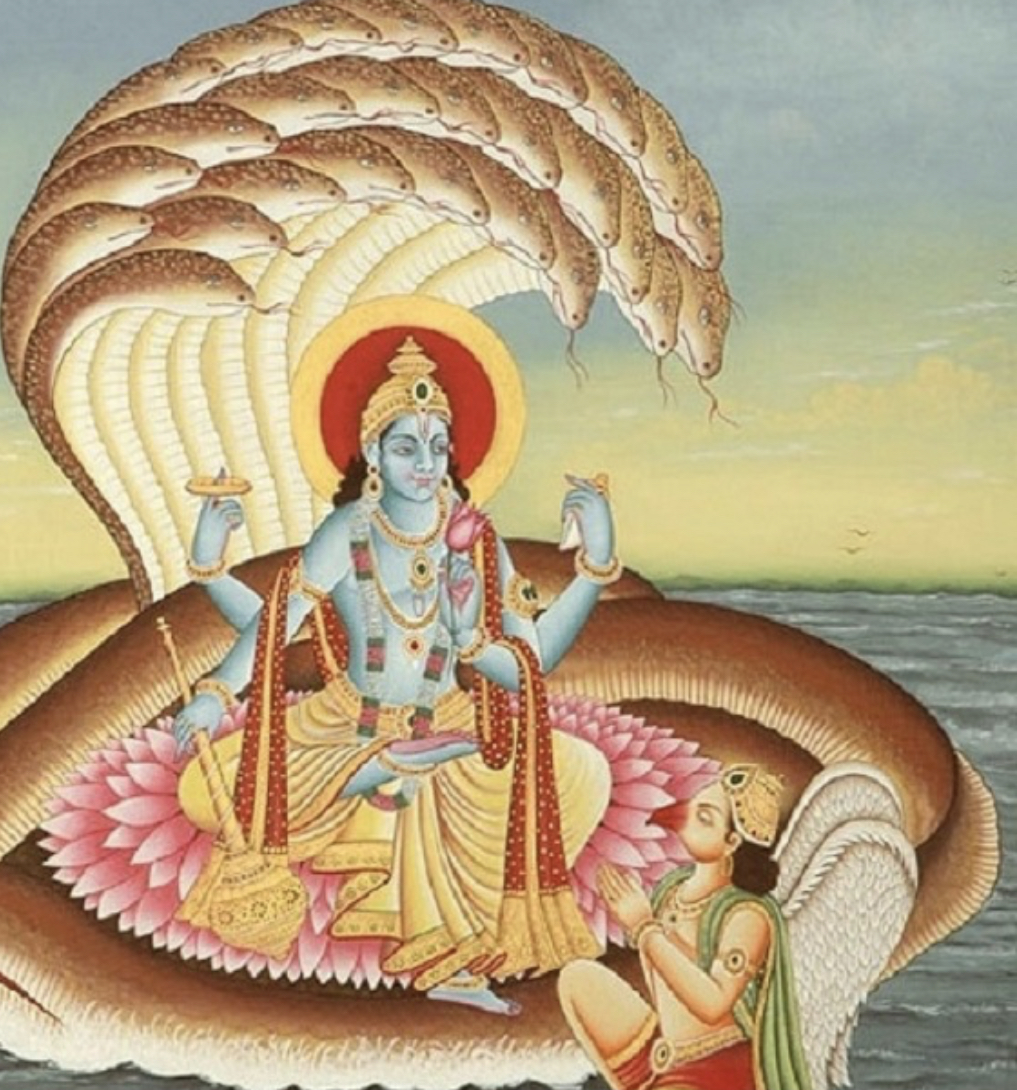 Most people prefer to steer clear of conflict. Like them, I usually pay the quiet ransom for civility and avoid the distraction or disruption left in its wake. As a yoga teacher and a proponent of peace, trying to cultivate balance and equanimity in the midst of commotion is encumbering at best. But, as much as I try to sidestep a confrontaion, theres another side of me that can emerge like a warrior. When danger lurks, the goddess energy of Hindu’s charnel-clad Kali unleashes. She will flare in varying degrees of circumstance, and I’m not so quick to reveal her encounters. Because this is also a conflict of sorts, its worth taking a look from the inside out.
Most people prefer to steer clear of conflict. Like them, I usually pay the quiet ransom for civility and avoid the distraction or disruption left in its wake. As a yoga teacher and a proponent of peace, trying to cultivate balance and equanimity in the midst of commotion is encumbering at best. But, as much as I try to sidestep a confrontaion, theres another side of me that can emerge like a warrior. When danger lurks, the goddess energy of Hindu’s charnel-clad Kali unleashes. She will flare in varying degrees of circumstance, and I’m not so quick to reveal her encounters. Because this is also a conflict of sorts, its worth taking a look from the inside out.
So, how can someone embody a warrior goddess and be a peace keeping yogi? Ive suspected the origin of the word yoga, which means “yoke” or “union of opposing forces,” may be of some significance. The Bhagavad Gita or “Song of God,” now used as a popular frame of reference is about an epic battle. Clearly not the allegory I would have chosen, but it is the basis for the ancient Indian scripture. It was incorporated into the Mahabharata, a larger text, around 200 BCE, and is thought to symbolize the ongoing fight between spirit and intellect, the struggle for a unified outlook, and the agility of skill and action. In essence, it is a story of opposing theories that are aspects of one eternal truth. In this way, it may be possible that such an internal conflict could be regarded as good news, as well as a vehicle to better navigate life at large.
We value mind/body practices as a gateway to well-being. It highlights the significance of nonviolence and contentment. The upsurge of such rediscovery is like a birthing ground for new hope and engagement. Perhaps the goddess Kali does have a place along the subjective journey inward and that conflict is part of an interconnected whole. Dr. Elinor Powell, author of the book, Heart of Conflict, tells us that in the midst of turmoil, spirituality is the most overlooked quality, however; the spirit is put to test when faced with adversity. As in most human birthing, it combines elements of celebration and pain. “Pain,” she says, “because a realization of the spirit takes us into a deeper concern, and celebration, because by recognizing it, we get in touch with what it really means to be human.” In fact, conflict can be a turning point or a signal for change.
Truly, conflict is a difficult part of life, and there are ways of working with it that are more inspired than the extremes of avoidance or aggression. James Gimian, known for his work in translating the ancient Chinese text Sun Tzu or The Art of War, talks about conflict as an outgrowth of differing conditions. His article, Taking Whole: The Art of Less War, states that to the extent that there is duality, there will be friction and one thing will rub against the other. It is possible though, to accomplish work with conflict skillfully and without resorting to aggression. One way is by applying the  concept of shih (pronounced “shir.”) Shih is the energy of something at a particular moment in time. “It embraces an intuitive connection to ordinary life and avoids heavy handed attempts to wrestle the world into submission.” Gimian also points out that this “active openness” is an unbiased perception of all the elements of a situation and the patterns they form. Contrary to a fixed view that only gathers information relative to that specific mindset, shih reveals the emerging changes of the way things are. Thus, the text of the Sun Tzu tells us: “Victory can be known, it cannot be made.”
concept of shih (pronounced “shir.”) Shih is the energy of something at a particular moment in time. “It embraces an intuitive connection to ordinary life and avoids heavy handed attempts to wrestle the world into submission.” Gimian also points out that this “active openness” is an unbiased perception of all the elements of a situation and the patterns they form. Contrary to a fixed view that only gathers information relative to that specific mindset, shih reveals the emerging changes of the way things are. Thus, the text of the Sun Tzu tells us: “Victory can be known, it cannot be made.”
Concomitantly, shih is fostered by a contemplative approach of making space inside the mind’s eye to see things more clearly, and this state can be further developed through meditation. Buddhist meditation master, Chog yam Trungpa Rinpoche, teaches that the lessons of meditation allows one’s most cherished and hard-won views to be open to change. He says “keep it in mind, just hold it like a baby’s grip on your finger, and maintain the same creative tension when holding a samurai sword.” It allows enough space between one’s vision and the reality of a situation until “a solution arises from the ever-shifting ground.” It is the same way that quantum mechanics describes a scientist pulling results from a matrix of possible outcomes.
yam Trungpa Rinpoche, teaches that the lessons of meditation allows one’s most cherished and hard-won views to be open to change. He says “keep it in mind, just hold it like a baby’s grip on your finger, and maintain the same creative tension when holding a samurai sword.” It allows enough space between one’s vision and the reality of a situation until “a solution arises from the ever-shifting ground.” It is the same way that quantum mechanics describes a scientist pulling results from a matrix of possible outcomes.
Educator and psychologist, Dr. Mark Thurston states in his book Willingness to Change, “things don’t always fit together nicely when dealing with the fragmentary nature of life beyond the realm of three-dimensional logic.” Thurston and many leading experts explain this event by means of quantum mechanics. Within the dominion of the fourth dimension, “free will permits a creative response to the contradictions of living and the paradoxes of human nature.” So much of life cannot be satisfactorily simplified, so how does one unify this contradiction? Thurston adds that the logical mind has trouble synthesizing this concept and it tries to suppress one side or the other. For example, take the person who has a great need for others and is extremely independent. How can those equally true sides of a person be integrated? The faculty of the soul (or one’s awareness) allows the blending and harmony of higher dimensions where opposite energy states exist simultaneously.
According to Powell, this is a paradoxical truth. It relates to the notion that the opposite of a great truth is another great truth, the same way a person is thought of as an individual, and also part of a community. “Individuality and community” appear to cancel each other out because from a logical perspective, one cannot be both in both states at the same time. But the paradoxical reality is that all individuals are both at the same time. It takes two mutually exclusive and apparently self-canceling truths to state the totality of what is true.
Not only does the paradoxical truth resolve internal polarities, there is also the theory of Inclusive Resolution or synergy. It means dissolving the sense of dualism. Contemporary Buddhist nun Pema Chodron describes it in her book, When Things Fall Apart: Heartfelt Advice for Difficult Times, as befriending the guilt and shame of what we are, and using it as a working basis for transformation. She says, “instead of looking for something, just work with what is.” It reverses a fundamental pattern of trying to avoid conflict and “making ourselves seem better than we are.” By not trying so hard to pretty things up or prove that being a peace seeking yogi and a warrior goddess is a mistake, allow it to be as it is.
Very rarely does someone tell us to relax in the presence of a conflict, but within the compartment of fear of pain and suffering, there may be a hidden benefit. Chodron analogizes this idea with the story of a man having to spend the night in a small hut with a very large snake. All night long the man is petrified by his own fear and the snake he thinks is a cobra. In the darkness before dawn he cried. Not out of despair, but from gentleness. For the first time he felt compassion for others; he felt their struggle. He accepted that he was an angry man, yet with his own immeasurable value as human being. With so much gratitude he walked up to the snake and bowed, then fell asleep. When he aw oke the snake was gone. That kind of intimacy with fear caused his drama to drop away. This sort of healing comes from letting there be room for grief, misery, and joy. Having spent a night or two with my very own snake in a hut, I think it’s important not to shrink in claustrophobic terror in the presence of a difficult thought, but to just keep offering enough space for it to eventually find its way out.
oke the snake was gone. That kind of intimacy with fear caused his drama to drop away. This sort of healing comes from letting there be room for grief, misery, and joy. Having spent a night or two with my very own snake in a hut, I think it’s important not to shrink in claustrophobic terror in the presence of a difficult thought, but to just keep offering enough space for it to eventually find its way out.
From the Center of Consciousness and Transformation at George Mason University, the course Personal Transformation: Identity and Conflict explores the nature of change and how conflict creates an opportunity for transformation. In the course, which was concieved by Mary Elizabeth Lynch, J.D. and Dr. Mark Thurston, students learn that if anything is ever going to change in one’s life, it must begin with compassion for all beings. For me, an avenue toward this goal was volunteering at a homeless shelter. Something I have wanted to do for a long time, but resisted for any number of good reasons. At first, I wasn’t sure how to approach the immense saturation of chaos riddled in the lives of these people. On occasion, there were opportunities to listen to their stories. This small and simple service reaffirmed the power of compassion and listening from the heart. Over the course of weeks, watching the staff problem-solve with such ease and grace was inspiring. They were compassionate, productive and at the end of most days, made a difference. I left there f eeling such gratitude and a much larger scope of understanding the human condition.
eeling such gratitude and a much larger scope of understanding the human condition.
The experience not only exemplified compassion, it also taught me something about the synthesis of true nature.” Truth sometimes manifests as nothing but a feeling, and sometimes it just comes freely when someone tells their story. Other times truth emerges as a result of just being there. Truth also appears out of silence, shining through the widows of the soul. Powell calls it a grasped truth, different from telling truth.
Viktor Frankl’s book Man’s Search for Meaning is a riveting first-hand account of his life in Nazi concentration camps. From those experiences and observations, he extracted a unique formula that lifts despair and suffering to a level of objectivity. He calcualted the relationship between despair, suffering, and meaning as: D = S M. In other words, despair is the result of suffering that has no meaning. He saw that the capacity for human suffering has the potential to exceed unimaginable circumstances as long as there is a point to the suffering. Along the same lines, in an interview with Bill Moyer, Chodron talks about the difference between pain and suffering and says that pain is a part of life, but what we do with suffering is in our control. Suffering is a choice that can end with perception. For instance, in a place of pain ask yourself, “What can I learn from this?” It puts a positive spin on it. The principle of perc eption and the ability to change your mind is what Chodron calls a forward thought. It is the de-escalation of aggression, the softening what’s rigid in the heart, and noticing what you’re saying to yourself. These are all ways of transforming suffering. On the other hand, some people think that if they could ban everything in the world that bothers them, then they would be happy its easier just to change your mind.
eption and the ability to change your mind is what Chodron calls a forward thought. It is the de-escalation of aggression, the softening what’s rigid in the heart, and noticing what you’re saying to yourself. These are all ways of transforming suffering. On the other hand, some people think that if they could ban everything in the world that bothers them, then they would be happy its easier just to change your mind.
How we perceive conflict is a foundation of societies, their worldview, religion, and culture. Buddhists believe that conflict is a state of being human. Instead of viewing it as abnormal, accepting that pain is more prevalent than peace is probably more accurate. Powell says, “How we perceive reality has a lot to do with how we enter into conflict.” Sun Tzu warns that holding on to a sense of separateness perpetuates duality, and that is the root of conflict. Rather, encourage an awareness of interrelated connectedness and move with the emerging changes as each piece affects all the others. As our awareness expands, we begin to see how altering a single piece moves the whole.
In closing, I think it’s safe to say that every one of us will be brought face-to-face with integrating the fierce Kali energy again and again. It doesn’t mean giving in to tantrums or impulses, but being compelled to look for the warrior goddess in moments of crisis. Perhaps, she is bearing a gift. The yogic path is about peace, but also about bringing out strength and channeling free will. The Bhagavad Gita instructs that by going deeper into one’s inner world, the confrontation with parts of yourself that were held hostage by fear, trauma, or social conditioning might come into view. Kali can be the enlightened force that facilitates the liberation of those aspects and reconnect with one’s true identity. So when the going gets tough, invite the conflict in for tea and ask, “What can I learn from you today?”
Peace.

References
Chodron, P. (1997). When Things Fall Apart: Heartfelt Advice for Difficult Times. Shambhala Publications, Inc.,: Boston.
Frankl, V. (2006). Man’s Search of Meaning. Beacon Press: Boston.
Gimian, J. (2006). “Taking Whole: The Art of Less War,” in Mindful Politics, ed. Melvin McLeod. Somerville: Wisdom Publications. pp. 238-249.
Kempton, S. (2010). How to Be Fierce. Online Yoga Journal Magazine. Retrieved 12/09/2010. http://www.yogajournal.com/wisdom/2553?print=1.
Moyers, B. (2009). Interview with Buddhist Nun Pema Chodron. Films on Demand.
Powell, E. (2003). The Heart of Conflict. Northstone Publishing: British Columbia, Canada.
Said, A., Funk, A. (2001). Peace and Conflict Resolution in Islam. “Peace in the Sufi Tradition: An Ecology of the Spirit.” University Press of America, Inc.: New York.
Thich Nhat Hanh. (2006). The Nature of Impermanence. Video. 2-06 The nature of impermanence.m4a
Thurston, M. (2005). Willingness to Change. We Publish Books: Rancho Mirage, CA.
Wilber, K. (2004). The Simple Feeling of Being: Visionary, Spiritual, and Poetic Writings. Shambhala Publications, Inc.,: Boston.



